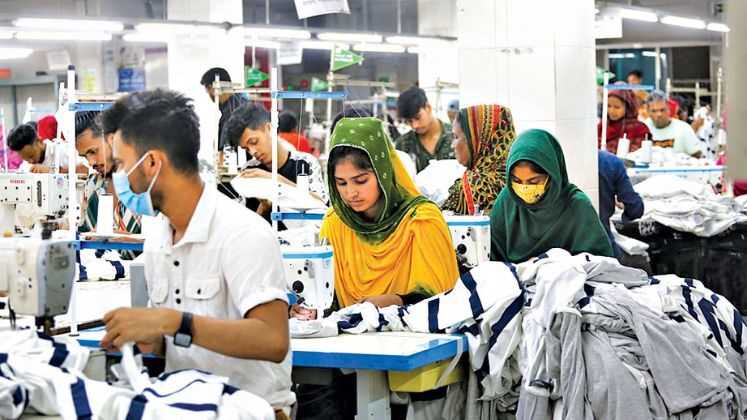
In the first two months of 2025, Bangladesh’s apparel exports to the United States soared by an impressive 26.64 per cent, significantly outperforming major competitors as American buyers continue to shift orders away from China.
Official trade data indicates that Bangladesh exported apparel valued at US $ 1.5 billion during January and February of this year, compared to US $ 1.18 billion in the same timeframe last year. This robust growth positions Bangladesh as the third-largest clothing supplier to the US, trailing only behind China and Vietnam.
While both China and Vietnam recorded growth of 8.85 per cent and 11.14 per cent respectively, Bangladesh’s surge was fueled by competitive pricing, improved compliance with labour and environmental standards, and a notable increase in orders diverted from China.
However, industry experts are expressing caution regarding future prospects. The Trump administration’s renewed focus on reciprocal tariffs, aimed at penalising countries with higher duties on US goods has introduced uncertainty into the global trade landscape. Although Bangladesh has not yet been directly affected, concerns persist that changes in US trade policy could jeopardize duty-free access or trigger new regulatory challenges.
“This growth is promising, but the trade environment is becoming increasingly unpredictable,” stated Abdullah Hil Rakib, a former senior vice president of the Bangladesh Garment Manufacturers and Exporters Association (BGMEA). “The volatility stemming from tariff politics in Washington complicates long-term investment planning and order forecasting.”
During the same period, the US imported a total of US $ 13.55 billion in apparel from global sources, marking an 11.20 per cent year-on-year increase. India and Pakistan also experienced significant gains, with growth rates of 25.70 per cent and 23.05 per cent respectively, while countries like Honduras faced a sharp decline of 20.86 per cent, underscoring the shifting dynamics in global sourcing.
Trade analysts caution that a more protectionist approach from the US could lead to increased scrutiny of trade benefits such as the Generalized System of Preferences (GSP), although Bangladesh’s apparel sector operates under a different framework.
For now, Bangladesh is capitalising on this opportunity, but the future remains uncertain. Stakeholders emphasise that sustained growth will depend on how the US navigates its evolving trade policies and whether Bangladesh can continue to establish itself as a reliable, ethical, and high-capacity supplier.
On 2nd April, the US imposed a significant 37 per cent retaliatory tariff on imports from several countries, including Bangladesh, but later announced a 90-day suspension of this decision, maintaining only the standard 10 per cent tariff for the time being.
“This pause provides us with a strategic opportunity,” noted Mashrur Reaz, chairman of Bangladesh Policy Exchange. “However, what follows after the 90 days is unpredictable. We must proactively explore options for reciprocal concessions and engage in various diplomatic and market-based strategies.”
Reaz encouraged the government to contemplate offering concessions such as bonded warehouse facilities for US cotton exporters and to work towards reducing the trade imbalance by increasing imports from the US. He also recommended a multipoint engagement approach, including diplomatic negotiations, boosting imports to lessen the trade gap, and discussions with buyers to identify market-based solutions.






